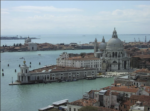Kienholz: Five Car Stud
.jpg)
La mostra riunisce una selezione di opere realizzate da Edward Kienholz e Nancy Reddin Kienholz, tra le quali la storica installazione che dà il titolo alla mostra.
Comunicato stampa
Milano, 20 aprile 2016 - Fondazione Prada presenta a Milano dal 19 maggio al 31 dicembre 2016 l’esposizione “Kienholz: Five Car Stud”, a cura di Germano Celant, che riunisce una selezione di opere realizzate da Edward Kienholz e Nancy Reddin Kienholz, tra le quali la storica installazione che dà il titolo alla mostra. L’anteprima stampa si svolgerà mercoledì 18 maggio, dalle ore 9 alle 12.
Five Car Stud è stata creata da Edward Kienholz tra il 1969 e il 1972 ed è stata esposta per la prima volta a Documenta 5 a Kassel, curata da Harald Szeemann. L’opera, che riproduce in dimensioni reali una scena di violenza razziale, è considerata una delle più significative dell’artista americano. Nonostante il clamore e l’attenzione della critica suscitati fin dalla sua prima esposizione, Five Car Stud è rimasta non visibile nel deposito di un collezionista giapponese per quasi quarant’anni. Solo tra il 2011 e il 2012, dopo il suo restauro, è stata ripresentata al pubblico del Los Angeles County Museum of Art e del Louisiana Museum of Modern Art in Danimarca. Ora parte della Collezione Prada, riappare per la prima volta in Italia in questa mostra. Five Car Stud diventa il nucleo centrale di un percorso espositivo che transitando dalla galleria Sud al Deposito e in uno spazio esterno, presenta 26 opere, tra disegni, lavori scultorei, assemblage e tableau, realizzati dai Kienholz dal 1959 al 1994, nonché materiali di documentazione sulla storia e il processo di creazione di Five Car Stud.
Five Car Stud catapulta lo spettatore in una situazione da incubo, lo immerge in una dimensione, rimossa o dimenticata, di estrema violenza. A più di quarant'anni di distanza dalla sua creazione restano intatte, infatti, la sua forza espressiva, la sua potente carica simbolica e la lucidità dell’atto di accusa contro la persecuzione razziale.
Edward Kienholz (1927-1994), artista autodidatta cresciuto nello stato di Washington, fonda con Walter Hopps la Ferus Gallery nel 1957 a Los Angeles. Nel 1961, dopo la prima personale curata da Hopps al Pasadena Art Museum in California, Kienholz è incluso con altri artisti della West Coast nella mostra curata da William Seitz “The Art of Assemblage” al MoMA di New York, in cui è accostato a figure storiche come Picasso, Schwitters, Duchamp e Cornell. Grazie a questa esposizione ottiene un primo riconoscimento internazionale, attirando l’attenzione di critici e curatori europei come Pontus Hulten che nel 1970 gli dedica la mostra “11 + 11 Tableaux” presentata a Stoccolma, Amsterdam, Düsseldorf, Parigi, Zurigo e Londra. Fin dagli esordi Kienholz impiega un immaginario realistico, quotidiano e inequivocabile per creare “un’arte della repulsione”, in diretta opposizione alla componente narcisistica presente nell’Espressionismo astratto o al feticismo delle merci e dei materiali industriali tipico della Pop Art e del Minimalismo. Come spiega Germano Celant, “Kienholz non tende a sublimare le bassezze e la tragicità del vivere, le condizioni di solitudine e di trivialità, ma le usa come strumenti per far risplendere l’universo basso e popolare, dove il macilento e lo sporco, il perverso e il lurido, rappresentano una bellezza nuova e sorprendente”.
“Kienholz: Five Car Stud” è completata da una pubblicazione illustrata, parte della serie dei Quaderni della Fondazione Prada, che include un saggio del curatore e una documentazione approfondita sulle opere esposte.
Fondazione Prada is presenting “Kienholz: Five Car Stud,” open to the public in Milan from 19 May through 31 December 2016 and curated by Germano Celant. The exhibition brings together a selection of artworks realized between 1959 to 1994 by Edward Kienholz and Nancy Reddin Kienholz, including the well-known installation that gives the show its title.
Five Car Stud was created by Edward Kienholz from 1969 to 1972, and first exhibited at documenta 5 in Kassel, curated by Harald Szeemann.
A life-sized reproduction of a scene of racial violence, Five Car Stud is considered one of the American artist’s most significant works. Despite the controversy and attention that it earned from critics right from its debut, the piece remained hidden from view in the storage of a Japanese collector for almost forty years. The artwork was only presented once again to the viewing public in 2011 and 2012 following restoration, first at the Los Angeles County Museum of Art and then at the Louisiana Museum of Modern Art in Denmark. Today the artwork is part of the Prada Collection, and is being shown for the first time ever in Italy, where it forms the central nucleus of an exhibition path that runs from the Sud gallery to the Deposito, and extends into an external space, presenting 25 artworks including sculpture, assemblages and tableaux realized by the Kienholzes from 1959 to 1994, as well as documentation material on the history and making of Five Car Stud.
Five Car Stud catapults the viewer into a nightmarish situation, immersing him and her in a dimension – either removed or forgotten – of extreme violence. More than forty years after it was first created, the artwork’s expressive force, its powerful symbolic charge and the lucidity of the accusation against racial persecution retain their original strength.
Among the other tableaux, assemblages and sculptures by Ed and Nancy Kienholz included in the exhibition are the wooden relief ‘Ore the Ramparts We Watched, Fascinated (1959), inspired by the American-Soviet space race; assemblages that incorporate or simulate monitors, such as The Death Watch (1976), Bout Round Eleven (1982) and The Twilight Home (1983); The Caddy Court (1986–1987), a grotesque and funereal representation of American Supreme Court justices; The Merry-Go-World or Begat by Chance and The Wonder Horse Trigger (1991–1994), a carousel which conceals an empathetic contemplation on the random determinism of birth; The Bronze Pinball Machine with Woman Affixed Also (1980), which reduces the female body to an object of pure sexual entertainment; Jody, Jody, Jody (1994), a tableau evoking a deplorable instance of child abuse; and one of the last works by the Kienholzes, 76 J.C.s Led the Big Charade (1993–1994), an installation that transforms baby dolls, wagon parts and different cultural and historical depictions of Jesus Christ into crucifixes, taking aim at religion in its institutionalized forms devoid of spirituality.
An autodidact and artist from Washington State, Ed Kienholz (1927–1994) founded Ferus Gallery with Walter Hopps in Los Angeles in 1957. In 1961, after his first solo show, curated by Hopps at Pasadena Art Museum in California, Kienholz, along with other West Coast artists, was selected for the William Seitz- curated exhibition “The Art of Assemblage” at MoMA in New York, where his work was displayed alongside Picasso, Schwitters, Duchamp and Cornell. In 1972, Edward Kienholz and his wife Nancy Reddin began an artistic collaboration. From this point forward the pair would co-sign all the works they produced until Edward Kienholz’s death in 1994.
Right from his earliest works, Ed Kienholz drew upon a realistic, quotidian and unequivocal imagination to create “an art of repulsion,” in direct opposition to a narcissistic component present in Abstract Expressionism, or the fetishism of industrial merchandise and materials typical of Pop Art and Minimalism. As Germano Celant explains, “Kienholz made no attempt to sublimate the meanness and tragedy of life, its conditions of loneliness and triviality, but used them as a way of putting a shine on a low and popular universe, in which the wasted and the dirty, the depraved and the filthy represented a new and surprising beauty: a feeling or perceiving that stupefies and excites, impresses and sickens, but never leaves you indifferent.”
This exhibition includes representations of violent situations that may disturb or offend some visitors. Minors are strongly advised to avoid visiting the exhibition, and in any case may do so only when accompanied by an adult who assumes full responsibility for the visit.



